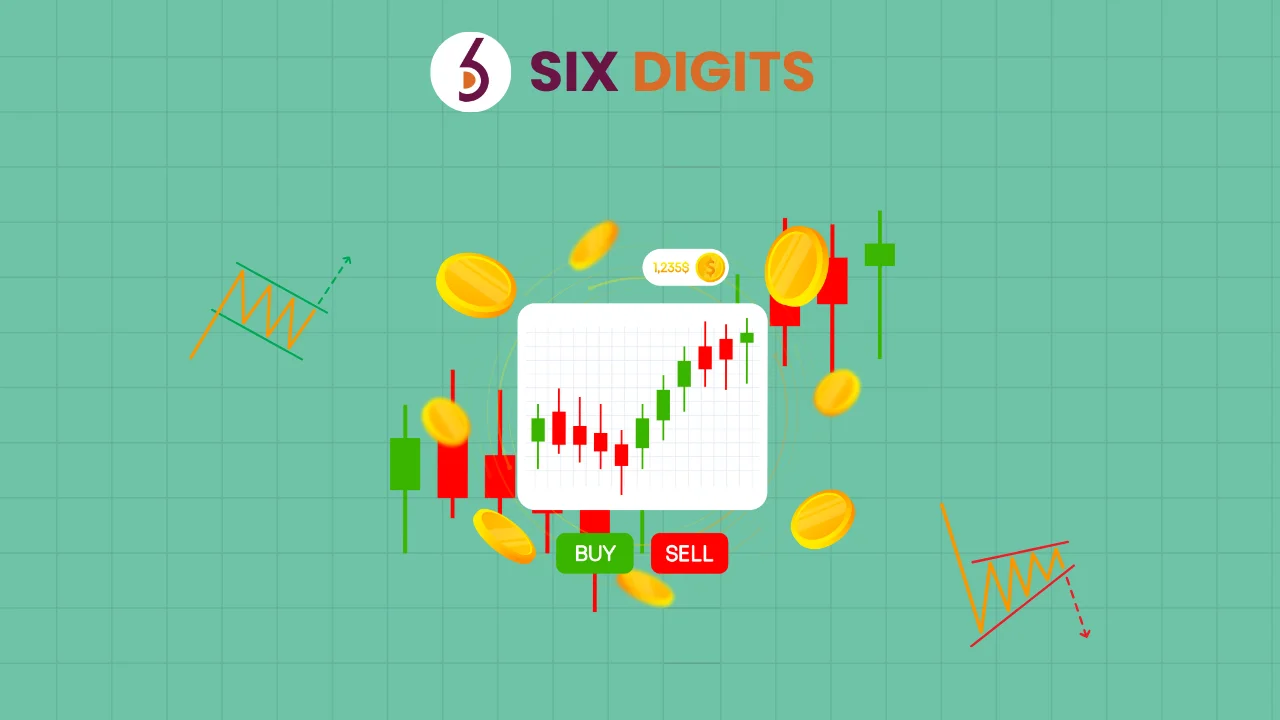Price Action Trading Strategy: A Complete Guide for Traders
February 7, 2025
12-15 mins read

Price Action Trading Strategy
Introduction
Within the dynamic realm of economic markets, price action trading is a timeless and powerful technique that lets traders make buying and selling decisions based primarily on the current price movements of a security or currency pair on its chart. By studying the collective buying and selling activity as captured in raw price data, traders can gain key insights into emerging patterns and potential opportunities to enter or exit positions.
In this comprehensive guide, we will cover the key basics of price action trading, including candlestick patterns, support & resistance levels, trendlines, reading price charts effectively, levels of market structure, and the impact of market psychology on asset valuations.
Understanding Price Action Dynamics
The premise of price action analysis rests on the notion that the present market price encapsulates all critical information influencing the asset. The interplay of various complex dynamics like news events, economic factors, trader emotions, and order flow are ultimately translated into the singular language of price.
Key Components of Price Action
Candlestick Patterns
- Visual price action representations over defined periods such as hourly, daily, or weekly charts.
- Candlestick indicators like dojis, bullish/bearish engulfing patterns, and hammer candlesticks indicate potential reversals within the current market trend.
Support and Resistance
- Critical price levels on charts where prices have historically encountered significant buying or selling pressure.
- Support levels act as price "floors" where downtrends have tended to reverse in the past.
- Resistance levels act as "ceilings" where uptrends have struggled to break above.
Trendlines
- Straight lines drawn along a chart to connect either swing highs or swing lows and capture the prevailing trend.
- Ascending trendlines showing higher swing lows indicate uptrends, while descending trendlines joining lower swing highs indicate downtrends.
- Breakouts and breakdowns from trendlines can signal shifts in current trends.
Reading Price Charts
Since price charts provide a graphical depiction of market dynamics, the ability to analyze them well leads to better-informed trading. Key factors include:
Timeframes
- Intraday charts: 5-minute or 15-minute price action for short-term day trading analysis.
- Daily and weekly charts: Used to analyze swings over weeks or months for medium-term trend analysis.
- Monthly and yearly timeframes: Spanning years of price data for long-term macro trend analysis and investor market outlook.
Types of Charts
Line Charts
- Simple visual representations that only connect a security's closing prices over selected timeframes to form a graphical line.
- Help gauge the overall broad directionality and long-term bias of the prevailing trend across extended periods.
Bar Charts
- Precisely capture and plot a security's open, high, low, and close price levels through easily decipherable rectangular bars.
- Convey essential range-bound information and hint at potential trend reversals or price pattern breakouts.
Candlestick Charts
- Visually appealing OHLC (Open, High, Low, Close) plottings that form brightly colored or hollow candles to explicitly display each period's price extremes and closing levels.
- Widely favored by technical traders for easy price pattern analysis based on color, size, and shape.
Stages of Market Structure
It’s vital for traders to accurately assess what stage the market is in when considering executing their price action strategies:
Accumulation
- Prices bottom out after a sustained downtrend and consolidate in a range as value-seeking buyers acquire positions on market dips.
- Downward movements begin witnessing buying activity rather than panic distribution.
- Signals potential trend reversal.
Advancing
- An uptrend is confirmed as prices break out of the accumulation range.
- The rally gains momentum as speculative buyers with a bullish bias return to the market.
- Further buying activity continues pushing prices higher.
Distribution
- An advancing uptrend starts to show signs of maturation as bold buyers see the opportunity to realize profits.
- Increased supply from profit-taking distribution leads to topping patterns as buying interest gradually wanes.
Downtrend
- Bearish traders firmly take control as sustained negative sentiment leads to significant selling.
- The breakdown of key support levels and new lows characterize the definitive decline in prices.
- Signals the beginning of a bear market.
Influence of Market Psychology
Price action does not occur in isolation but under the influence of market psychology. Key factors include:
Buyer/Seller Behavior
- Buyers aim to generate profits by purchasing securities or currency pairs in anticipation of upside breakouts and rising prices.
- Sellers seek to benefit from declining valuations by short-selling or liquidating existing long positions.
- Stop-loss orders provide cues into market participants' intended trade direction and sentiment.
Emotional Biases
- Extreme emotions like fear and panic can rapidly trigger massive sell-offs and panic distribution even in undervalued markets.
- Unbridled greed from speculative euphoria induces frenzied and irrational buying activity, leading to inflated valuations.
- Behavioral biases such as overconfidence, loss aversion, and herd mentality significantly impact decision-making.
External Triggers
- Major scheduled news events, economic data announcements, corporate earnings reports, geopolitical developments, and central bank policies can significantly sway trader sentiment.
- These triggers often lead to volatile price swings and trading activity spikes.
Common Price Action Setups
Skilled traders continuously scan charts for high-probability price action patterns that indicate upcoming trend reversals or continuations:
Reversal Setups
- Head and Shoulders, Double or Triple Tops & Bottoms: Indicate a weakening of the prevailing trend and potential reversals when support or resistance levels get broken.
- Confirmation often requires increased trading volumes or momentum shifts.
Continuation Setups
- Pennants, Flags, Symmetrical or Ascending/Descending Triangles: Reveal brief sideways consolidations after a strong trend move.
- Breakouts or breakdowns from these patterns, confirmed with volume surges, generally continue the primary trend.
Price Action Trading Strategies
Based on analyzing price action in alignment with overall market structure and sentiment, traders execute strategies tailored to capitalize on emerging opportunities.
Trend Following Tactics
- Use indicators like moving average crossovers and momentum oscillators.
- Identify pattern breakouts from chart formations like triangles.
- Buy pullbacks in an uptrend or sell rallies in a downtrend aligned with the dominant trend.
Countertrend Trading
- Mean reversion strategies using Fibonacci retracement levels or previous swing highs/lows.
- Profitably capitalize on short-term pullbacks against the prevailing trend with well-calibrated stop losses and risk management.
Range-Bound Trading
- Identify horizontal support and resistance levels using Bollinger Bands or channels.
- Place precision trades at key range support and resistance levels, confirmed by volume or momentum signatures.
Risk Management Guidelines
Stop Losses
- Place stop-loss orders at key price levels beyond major support zones, trendlines, or invalidated chart patterns.
- This limits downside risk while allowing some price fluctuation.
Position Sizing
- Use ATR (Average True Range) indicators to gauge volatility.
- Allocate trade capital based on risk-reward potential to avoid overexposure.
Risk-Reward Ratios
- Set clear profit-taking targets at resistance levels.
- Favorable risk-reward ratios (1:2 or 1:3) ensure consistent profitability.
Creating a Trading Plan
Defining Goals
- Set specific financial goals and performance milestones.
- Continuously improve trade planning, execution, and risk management.
Trading Journal
- Record chart formations, trade executions, and emotional factors.
- Evaluate risk management and market conditions for improvement.
Ongoing Education
- Stay updated on market trends, economic policies, and trading techniques.
- Develop advanced skills like quantitative strategies for adaptability.
Conclusion
Price action trading involves reading candlestick charts, identifying support/resistance levels & trendlines, recognizing high-probability chart patterns, and executing strategies with risk management. By understanding the psychology behind price dynamics, traders can make strategic decisions and improve performance consistency.
Recommended Blogs


 Best Health Insurance to Buy in 2025
Best Health Insurance to Buy in 2025April 24, 2025
 Top 5 credit Cards in India
Top 5 credit Cards in IndiaMarch 31, 2025